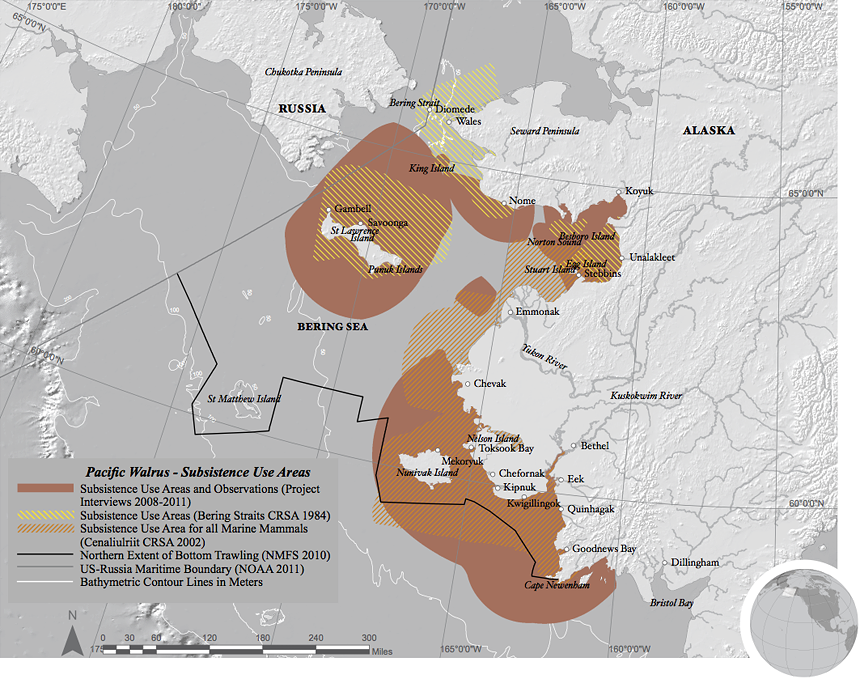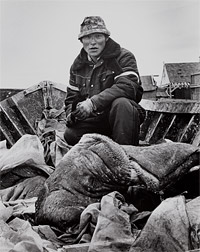Maps: Pacific Walrus: Subsistence Use

NOTES:
The area offshore Cape Newenham (extending northwest to the Cenaliulriit CRSA marine mammal subsistence area and southeast into Bristol Bay) combines hunting with walrus migration and foraging based on local knowledge. During interviews conducted for the Bering Sea Elders Group the distinction between hunting and migration/foraging in this area was not explicit.
Walrus subsistence use area from Bering Strait northeast into Chukchi Sea was drawn for this report from a description in Bering Straits CRSA Resource Inventory stating that walrus hunting here occurs out to an estimated 40 miles.
Bering Strait CRSA area around St. Lawrence Is. – Straight western edge represents the end of the page on which data was drawn in the original source.
Cenaliulriit CRSA area near Emmonak –The right angle represents the edges of USGS base maps used in the documentation process.
Cultural Practices

Dorothea Leighton M.D. Collection 1940-1982 UAF-1884-31-41
Central Yup’ik: Asveq
St. Lawrence Island Yupik: Ayveq Inupiaq: AsvuiqScientific: Odobenus rosmarus divergens
Skin boats [on St. Lawrence Island] are made with walrus, not maklaks [bearded seal] skin, because St. Lawrence boats are bigger than mainland boats—and walrus hides are bigger than maklaks. Bearded seal skins are used for boats by mainland Eskimos.1Elders (after group discussion) – Gambell
We eat clams that are still hard in the stomachs of walrus and bearded seals. Eat the clam tongues. They’re very tasty. We eat them when they’re new. We have always done this.2 Walter Lewis – Chefornak

Pacific walrus is a seasonal resource for villages along the Bering Sea coast, Nunivak, St. Lawrence and Diomede islands. The primary hunting season is in the spring as walruses migrate north with the pack ice.3 Where hunting occurs depends on the location of the ice and varies with ice conditions and weather.4
Landing a walrus provides a substantial amount of meat, which is customarily shared among many households. It is not unusual for the entire community to be offered a share. Walrus flippers are a delicacy. Clams found in walrus stomachs are also eaten.5
A walrus provides more than food. The hides of female walruses (preferred because their skins are smoother than those of the males) are used for making umiaks, traditional open skin boats.6 Hides are used to create products such as rawhide lines.7 Elders sharing their experience and artifacts found throughout the region reveal a long history of ivory carving for making tools such as harpoon and spear points and fish hooks.8,9 Ivory carving of sculpture and jewelry is an important source of income.
Important Habitats:
Pacific Walrus




